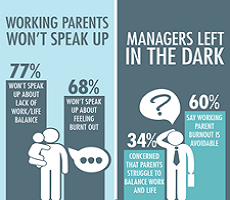October 15, 2015
SMEs appreciate flexibility and freedom of running their own business 0
 The latest ONS employment figures indicate that the boom in self-employment appears to have ended, as the number of self-employed people has fallen for the first time since before the recession. Yet those who’ve successfully started their own businesses have something to celebrate. According to a report from AXA PPP, SME owners appreciate the greater flexibility (58 percent) and the greater freedom (37 percent) that owning a business gives them. Seventy per cent of owners also said they are proud, inspired, content or fortunate to own their own business, highlighting the positive effects that having control over your working life can bring. More than a third (35 percent) admitted they could delegate more to improve the way they manage their business – with nearly half (47 percent) of business owners reporting that the pressure of work spills over into their home life.
The latest ONS employment figures indicate that the boom in self-employment appears to have ended, as the number of self-employed people has fallen for the first time since before the recession. Yet those who’ve successfully started their own businesses have something to celebrate. According to a report from AXA PPP, SME owners appreciate the greater flexibility (58 percent) and the greater freedom (37 percent) that owning a business gives them. Seventy per cent of owners also said they are proud, inspired, content or fortunate to own their own business, highlighting the positive effects that having control over your working life can bring. More than a third (35 percent) admitted they could delegate more to improve the way they manage their business – with nearly half (47 percent) of business owners reporting that the pressure of work spills over into their home life.













 Biodynamic lighting is an artificial light source that replicates the dynamic variations of daylight and sunlight through a light management system. Up until recent times, it was commonly believed that light was only needed for seeing. However, in 2001, an American scientist, G. C. Brainard discovered a circadian photoreceptor in the retina, which receives a specific quality and quantity of light, and sets the biological clock.* He discovered that light not only provides us with the ability to see, but that light enters the eye via the ‘fourth pathway’, which has a vital non-visual or biological effect on the human body. His studies showed that a certain quantity and quality of light stimulates the biological clock, also known as the circadian rhythm, which regulates hormone levels, particularly melatonin and cortisone, in the body and so plays a vital role in our physical and mental wellbeing.
Biodynamic lighting is an artificial light source that replicates the dynamic variations of daylight and sunlight through a light management system. Up until recent times, it was commonly believed that light was only needed for seeing. However, in 2001, an American scientist, G. C. Brainard discovered a circadian photoreceptor in the retina, which receives a specific quality and quantity of light, and sets the biological clock.* He discovered that light not only provides us with the ability to see, but that light enters the eye via the ‘fourth pathway’, which has a vital non-visual or biological effect on the human body. His studies showed that a certain quantity and quality of light stimulates the biological clock, also known as the circadian rhythm, which regulates hormone levels, particularly melatonin and cortisone, in the body and so plays a vital role in our physical and mental wellbeing.


 This week the UK’s Health Secretary found himself at the centre of a storm because of
This week the UK’s Health Secretary found himself at the centre of a storm because of 
















October 26, 2015
An updated green building standard designed to meet wider business objectives 0
by Sue Gregson • Comment, Facilities management, Legal news, Property
(more…)